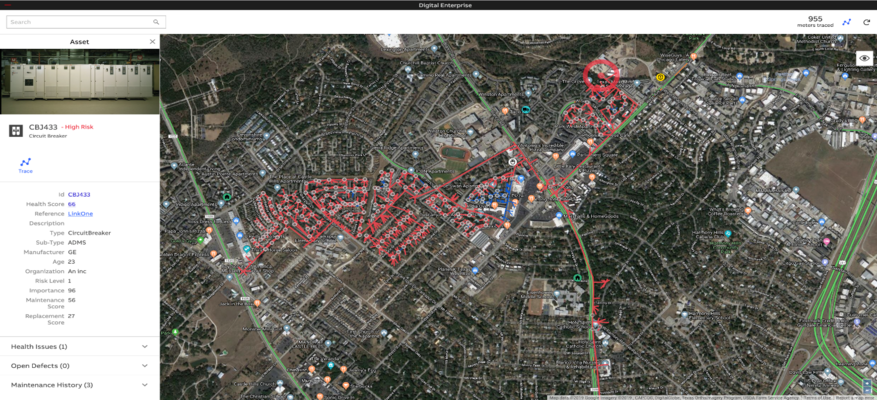As mountain enthusiasts of all skill levels can confirm, the choice of equipment is critical when the summit to be conquered is more ambitious. For a walk in the hills, a pair of comfortable trainers will do; however, to climb Mont Blanc or Everest, you need oxygen, snow boots, ropes, and more.
Asset management is a mountain in its own right, and while the level of difficulty depends on your organisation, the majority of organisations are under-equipped for the challenges they face. Just as the professional mountaineer needs specialised equipment, the professional maintenance manager needs sophisticated and flexible software solutions for the journey towards mature asset management. In this brief article, we’ll highlight a few key considerations for a successful summit.
In the not-too-distant past, paper and worksheets were considered sufficient to manage maintenance activities; these eventually gave way to computer-based spreadsheets, which are still highly prevalent today, but with rapidly diminishing results. The reason is simple: It’s the wrong equipment for a much more difficult mountain. Today’s maintenance managers are expected to reduce costs whilst meeting customer demand for higher service levels, all in the midst of growing technological complexity. Attaining a high level of asset management maturity requires a move to informed, proactive and strategic behavior. This is only possible by fully utilizing the latest technologies in the world of information technology, telecommunications and sensors.
Always start with a map
For any organisation to deliver a consistent outcome, it must have a well-defined asset management policy to provide clear context to the diverse range of people involved in producing the desired results (Figure 1). The PAS 55 standard issued by BSI in 2008 perfectly described the guidelines of this evolutionary path of maintenance management. According to PAS 55, asset management is "a systematic and coordinated set of activities and practices that allows companies, through an optimally managed and sustainable organization of their assets and systems, to improve their performance, reduce risks and expenses and implement their strategic plan during the life cycle of the asset.” This principle has now found its natural home in the ISO 55000 standard, which describes the need for a fully integrated maintenance management system that can support the full breadth of a mature asset management policy to deliver performance, quality, administration, environment, and safety & risk management.
Gear up: the benefits of modern asset management software
An enterprise asset management (EAM) system is absolutely essential to the modern maintenance manager. It forms the ‘foundation’ from which to drive a comprehensive strategy. An EAM is specialised software that can support the day-to-day control and maintenance of assets as well as the resources who maintain them. This will drive synergies from a holistic company view, uncovering hidden and unexpected opportunities for improvement.
Implementing an EAM system offers major improvements in management and engineering visibility. An EAM system breaks vertical silos, but it also addresses the horizontal silos between operation and strategy. The business intelligence capabilities that an advanced EAM offers provide reports and dashboards to support the visualization of asset health, risks and process compliance. The benefits of an EAM system begin to grow exponentially with the subsequent integration of all key business functions, including financial processes. This introduces the ability to make asset decisions that are optimised from a financial perspective—and this is not limited to just asset performance. When budgets are tight, prioritizing decisions such as capital investments, or what maintenance can be deferred, or solving inefficient resource utilization, becomes critical. An EAM is crucial to helping balance asset risks, costs and performance, allowing sustainable and informed choices that are aligned with a business strategy.
Reaching the summit…
Numerous large asset management organisations have implemented dedicated software and are learning the benefits of this heightened level of maintenance management maturity. But reaching the top of a mountain once is very different from achieving it day after day. To consistently achieve high levels of asset management maturity in an asset-intensive environment, the maintenance management team must be flexible and innovative. In the mountains, weather conditions can change rapidly, and the experienced mountaineer knows how to adapt; similarly, in a complex industrial context, unforeseen events are common, so it is also essential that software systems are flexible to support ongoing innovation.
…and going beyond
An EAM system is only the beginning; a gateway to greater digital transformation, where technology enables users to rapidly evolve in line with developing business challenges, which is essential to sustaining mature asset management processes. In a truly digital enterprise, asset performance and maintenance activities are available from a single enterprise-wide graphical interface (Figure 2).
Imagine: From one dashboard, an engineering or maintenance manager can view and act upon the health and condition of the fleet of assets, have access to alarms from live sensor information, be able to see the results of performance models, have access to operational status information, to 3D asset diagrams, the ability to prioritise and schedule resources, and more. The heights that can be achieved are dizzying.
The journey begins with the first step
Any mountain is intimidating when you’re standing at the bottom, but the right tools and equipment make the climb possible—even for the novice. Asset-intensive organisations are complex, and beset with ever-evolving challenges. In this rapidly changing business world, it’s important to equip yourself with sophisticated and flexible technology that can keep pace with your current needs, support your ongoing initiatives, and enable you to set your sights on ever-higher summits.




















